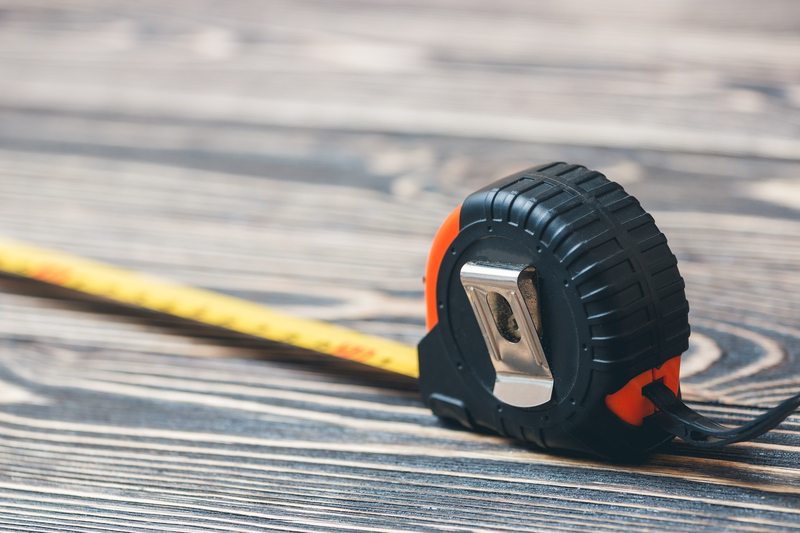Professional Insights: Storing Sofas for Ultimate Durability
Posted on 17/05/2025
Professional Insights: Storing Sofas for Ultimate Durability
Ensuring the longevity of your cherished sofa doesn't stop at regular cleaning and use--it extends into how you store it. Whether you're moving, remodeling, or simply making space, understanding the best practices for storing sofas for ultimate durability is crucial. In this comprehensive, SEO-optimized guide, we share top professional insights on sofa storage to keep your living room centerpiece in pristine shape for years to come.

Why Sofa Storage Matters for Longevity
Many people invest in quality sofas for comfort and style, yet overlook the importance of proper storage, especially during extended periods of non-use. Improper storage can lead to mold, mildew, fabric fading, structural damage, and unpleasant odors. With the right approach, storing your sofa correctly is a guaranteed way to preserve both appearance and functionality, ensuring it stays as inviting as the day you bought it.
Common Reasons for Sofa Storage
- Relocating between homes
- Renovation or remodeling projects
- Downsizing or temporarily freeing up space
- Seasonal changes impacting room use
- Protecting heirloom or sentimental pieces
Preparing Sofas for Long-Term Storage
Proper preparation is the cornerstone of durable sofa storage. Follow these steps to shield your furniture from common storage hazards:
1. Thorough Cleaning
Never store a dirty sofa. Residual dirt, body oils, crumbs, and moisture can attract pests, cause stains, and lead to unpleasant odors. Start your sofa storage journey with a deep clean.
- Fabric Sofas: Use a vacuum with brush attachments to remove dust and debris. Spot-clean stains with appropriate cleaners or hire a professional for stubborn spots.
- Leather Sofas: Wipe down surfaces with a damp, soft cloth and use a leather conditioner to prevent cracking or drying over time.
- Wooden Accents: Dust thoroughly and apply a polish to preserve sheen and prevent drying.
Allow the sofa to air dry completely before storage to avoid mold and mildew growth.
2. Disassemble When Possible
Disassembling sofas not only makes them easier to transport but reduces stress on joints and upholstery. Remove legs, cushions, slipcovers, and, if possible, backs or armrests. Carefully bag and label all screws, bolts, and small hardware.
3. Secure Loose Parts
Wrap cushions separately, tie up removable skirts, and secure any moving parts. Doing so minimizes wear from shifting during transit or storage.
4. Choose the Right Packing Materials
Avoid cheap plastic wraps, which can trap moisture and cause condensation. Instead, opt for:
- Breathable furniture covers or specialty moving blankets
- Cotton sheets or fabric drop cloths
- Bubble wrap (for legs and hard surfaces)
Never use colored paper or newsprint directly on fabric--it may transfer ink or dyes.
Selecting the Best Storage Environment
The environment in which you store your sofa dramatically affects its condition. Here's what professionals recommend for optimum furniture storage:
1. Opt for Climate-Controlled Storage Units
Humidity and temperature extremes are an enemy of sofa durability. Climate-controlled self-storage units maintain steady humidity (ideally 40-55%) and temperatures between 60-78?F (15-25?C).
- Benefits: Protects against mold, mildew, and cracking (especially important for leather and wood).
- Prevents pests such as moths, rodents, or insects.
- Reduces fabric fading and odor absorption.
2. Elevate the Sofa
Store your sofa off the floor using pallets, furniture risers, or blocks. This reduces the risk of water damage from unexpected leaks or flooding and facilitates air circulation.
3. Allow Adequate Ventilation
Do not pack sofas against walls or other furniture. Leave a minimum of 2-4 inches of space on all sides--airflow prevents condensation and mustiness, which degrades most upholstery finishes.
4. Control Light Exposure
Even indirect sunlight can cause fabrics and leather to fade over time. Opt for storage units with no windows or cover any windows with blackout curtains or UV-protective sheeting.
Expert Tips for Ultimate Sofa Durability During Storage
Follow these professional strategies to keep your sofa in peak condition, even after extended storage:
1. Inspect and Maintain Regularly
If possible, check your stored sofa every three months. Look for early signs of issues--such as mold, pests, or structural shifting--so they can be corrected before causing lasting damage.
2. Use Proper Pest Deterrents
Place sealed sachets of lavender, cedar chips, or silica gel packets around the sofa for natural protection without harsh chemicals. Avoid mothballs, which leave lingering odors and can be toxic.
3. Avoid Over-Stacking
Never stack heavy items--boxes, electronics, or appliances--on top of your sofa. Weight and uneven pressure can warp frames, compress cushions, and damage delicate upholstery.
4. Maintain an Even Position
Ensure the sofa sits level to prevent unnecessary stress on the frame. An unbalanced sofa can suffer from warping or leg damage over time.
5. Reapply Conditioner or Polish
If storing for over 12 months, revisit for a quick leather conditioning or wood polish application to protect against drying due to long-term air exposure.
Specific Storage Advice by Sofa Material
Different sofa types have their own unique vulnerabilities and care requirements. Here's what the pros advise for each kind:
Upholstered Fabric Sofas
- Before storage: Treat with a fabric protector spray if fabric allows.
- Cover with a breathable cloth--not plastic--to safeguard against dust and moisture.
- Store cushions vertically to prevent flattening.
Leather Sofas
- Cleansing and conditioning leather is imperative; untreated, it can become brittle and crack after a few months.
- Shield with a soft cotton sheet or specialty leather cover.
- Maintain distance from heat sources or direct lights, as leather is sensitive to environmental shifts.
Wooden-Framed Sofas or Loveseats
- Dust and polish all wooden surfaces prior to storage.
- Wrap legs and frames in bubble wrap or padded cloth to prevent scratches and dents.
- Lean against sturdy surfaces for extra support, but avoid direct ground contact to minimize moisture risk.
Mistakes to Avoid When Storing Sofas for Durability
- Skimping on cleaning before storage
- Using non-breathable covers such as plastic wrap
- Forgetting to label disassembled parts
- Piling furniture items or heavy boxes on top
- Storing in damp, unventilated spaces like basements or garages
- Not checking the sofa during the storage period
Avoid these common pitfalls to maximize both sofa longevity and your peace of mind.
Prepping Sofa for Return to Service
Once your storage term ends, here's how to reintroduce your sofa for everyday comfort:
- Unwrap carefully, vacuum, and wipe down as needed.
- Allow a few hours for air-out to release any stored-in odors.
- Inspect all joints and reassemble, tightening any hardware as necessary.
- Apply fabric refresher or leather conditioner for renewed softness and sheen.

Should You Hire Professional Sofa Storage Services?
While DIY storage is possible, professionals offer specialized packing, climate-controlled environments, and expertise in caring for high-value sofas. If your sofa is custom-made, antique, or has sentimental value, investing in professional services ensures ultimate durability and peace of mind.
Advantages of Professional Storage:
- Expert packing and wrapping techniques safeguard against accidental damage.
- Insured storage for added protection in case of unforeseen events.
- Regular maintenance and checks to catch issues early.
Conclusion: Preserve Your Sofa's Value and Comfort
Your sofa is more than just a place to sit--it's an investment in your home's comfort and style. Ultimate durability is achievable with the right techniques, material-specific care, and attention to storage detail. Whether you're storing a sofa short-term or for several years, following these expert insights will maximize the life and enjoyment of your furniture for generations to come.
Remember: Clean thoroughly, disassemble and secure, select the right environment, use breathable covers, maintain with regular checks, and avoid common pitfalls. For the best results and peace of mind, consider leveraging professional storage services, especially for high-value pieces. By implementing these proven methods, you will master the art of storing sofas for ultimate durability--preserving both comfort and style for the long run.





